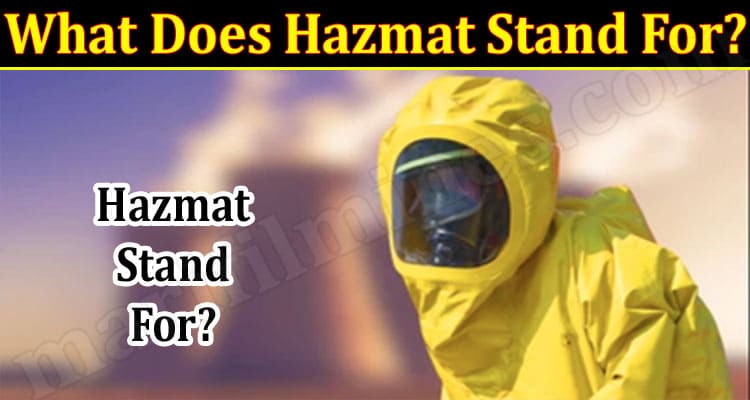What Does Hazmat Stand For?: HazMat is a short form for “Hazardous material” – a substance, chemical, or mixture that carries the potential to cause harm to someone’s health, property, or the environment if not stored or handled properly.
Hazmat can be solids, liquids, gases, or a combination of all three, such as in the form of dust, mist, smoke, vapor, or fumes. Hazardous materials include substances such as chemical vapors, fumes, toxins, carcinogens, fuels, nuclear waste, and corrosive chemicals – all of which can endanger health, property, or the environment if handled carelessly.
Continue reading to learn more about hazardous materials, or HazMat, and the potential risks they pose to one’s health and the environment.
Classification of HazMat
Based on the level of risk they pose, hazardous materials can be categorized into the following eight main classes, and a ninth miscellaneous class that covers all the materials that do not fall under the first eight.
- Class 1 – Explosives
Explosives such as TNT and dynamite fall under this classification of hazardous materials because they have the ability to create large amounts of heat, sound, and smoke that can be detrimental to health and the environment. They are also capable of causing catastrophic damage to life and property when detonated.
- Class 2 – Gases
A wide range of gases also poses a risk of damage to health and property either due to their toxic nature or because they are extremely flammable or can potentially asphyxiate an individual. Examples of hazardous gases include carbon monoxide, hydrogen cyanide, formaldehyde, and methane.
- Class 3 – Flammable Liquids and Combustible Liquids
The hazardous material classification defines this class of hazmat as “liquids, liquids containing solids, or a mixture of liquids that give off a combustible vapor and have a flash point lower than 141°F or 60.5°C”.
Liquids such as petrol, diesel, and acetone have the potential to cause great harm due to their volatile nature and their ability to cause catastrophic fires upon ignition.
- Class 4 – Flammable Solids and Spontaneously Combustible Materials
Like flammable liquids, flammable solids such as matches, sulphur, and activated carbon also pose a significant threat to one’s property and safety because they are highly combustible and can cause extreme conflagrations.
Some of these solids can also cause fire through friction or spontaneously undergo an exothermic reaction that can cause fires.
- Class 5 – Oxidizers/Organic Peroxides
Oxidizers are considered hazardous because while they may not be combustible on their own, they can also contribute to combustion by undergoing a redox reaction to produce oxygen. Organic peroxides also fit in this class because they can experience spontaneous explosive decomposition to exude large amounts of heat and burn rapidly.
- Class 6 – Toxic and Infectious Substances
Toxic materials are poisonous and can cause severe injury or even death if swallowed, inhaled, or brought in contact with skin and, thus, need to be handled with the utmost diligence and care. Examples include lead, methyl bromide, pesticides, phenol, and cyanides. Infectious substances also fall in this category because they are known to contain a pathogen that can cause disease in humans or animals.
- Class 7 – Radioactive Materials
Radioactive substances such as uranium and radioactive ores and isotopes have the potential to undergo radioactive decay, releasing ionizing radiation with the potential to cause significant short-term and long-term damage.
- Class 8 – Corrosive Materials
Corrosive substances are considered dangerous because they disintegrate or degrade other substances upon contact. These include acids with a pH below 2 or alkalis with a pH above 12.5.
- Class 9 – Miscellaneous Hazardous Goods
The last class of HazMat covers all the dangerous items that pose an imminent risk to health, property, or environment but do not fall under the definition of any of the first eight classes. Common examples include asbestos, acetaldehyde ammonia, zinc oxide, and lithium-ion batteries.
The Bottom Line
Let’s face it! Almost every company uses some sort of hazardous substance on-site. But these hazardous substances don’t have to be dangerous. It is their mishandling that makes them dangerous. If your workplace has any hazardous materials, it is your legal obligation to provide adequate hazmat training to your employees to ensure their health and safety.
At Go Hazmat Hub, our certified instructors with years of experience offer customized online and on-site hazmat training to help organizations ensure the safety of their employees and become compliant.
Contact us today to learn more about our simplified solutions for all your hazmat needs.

